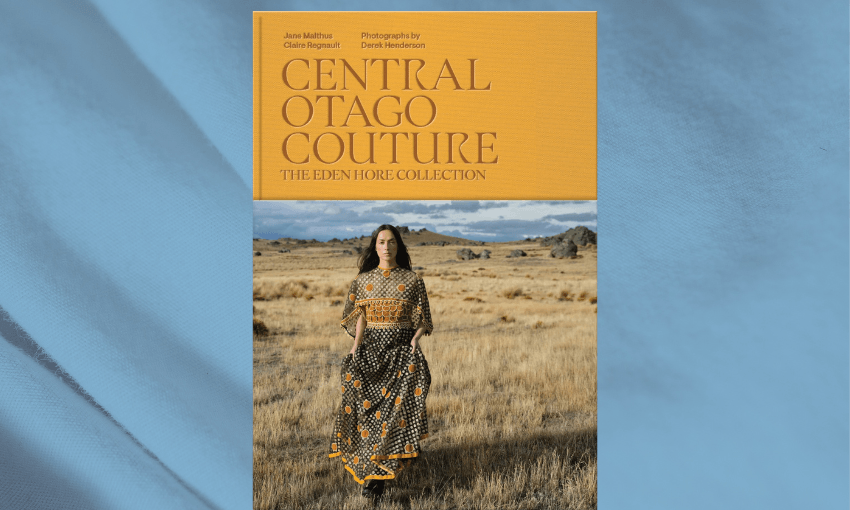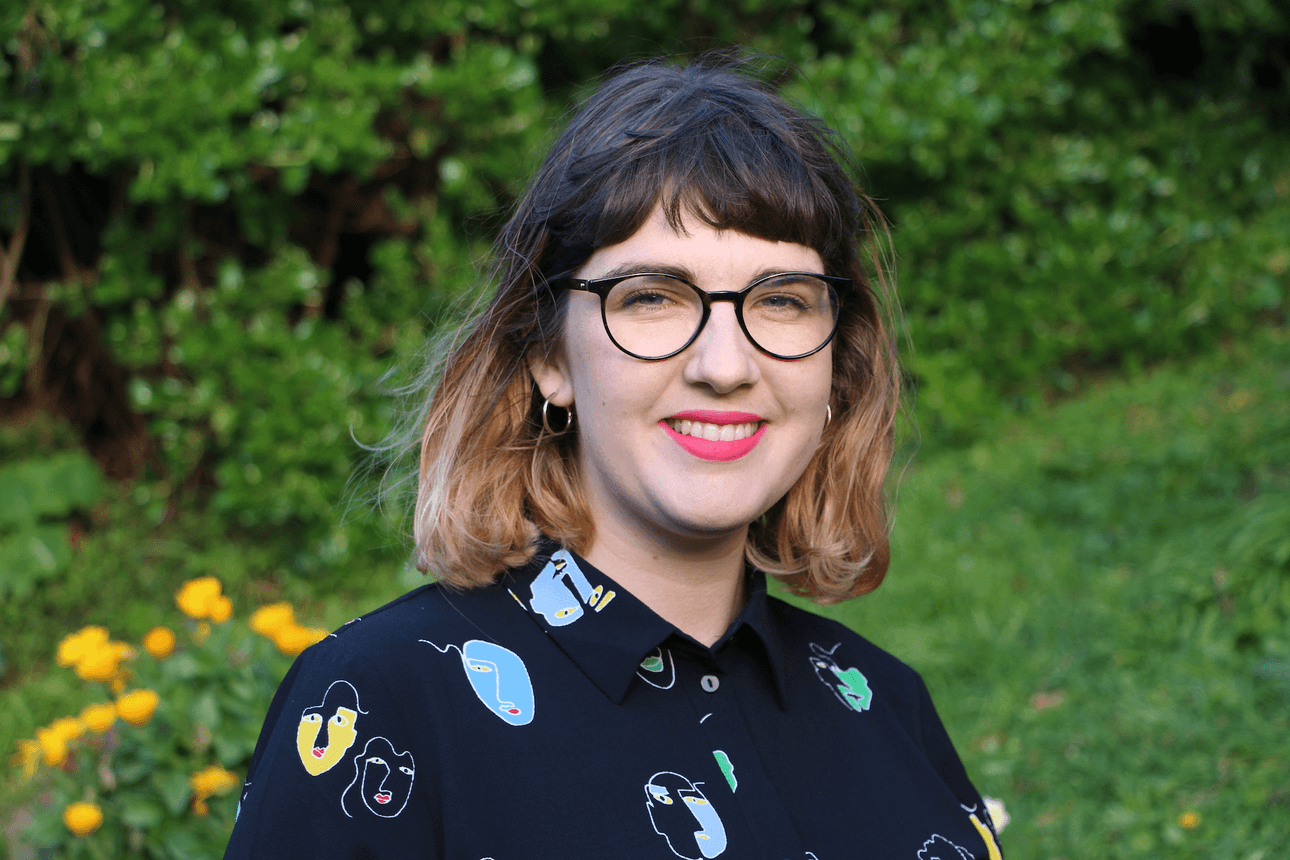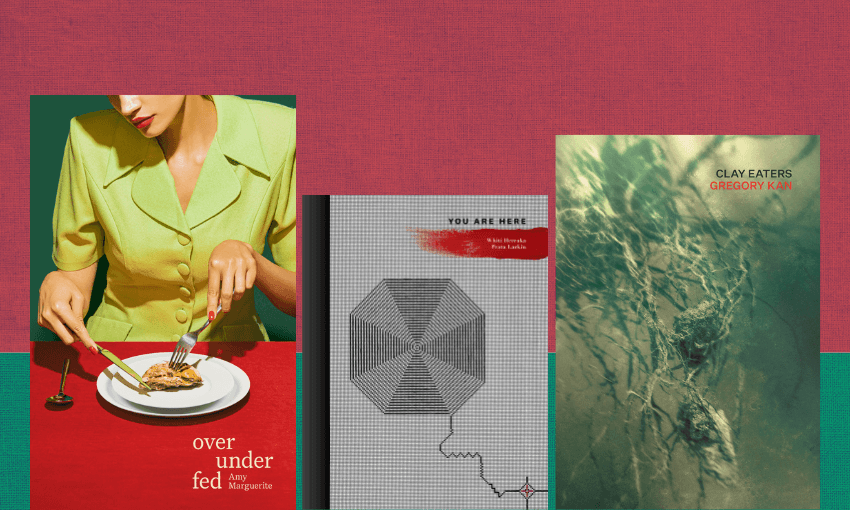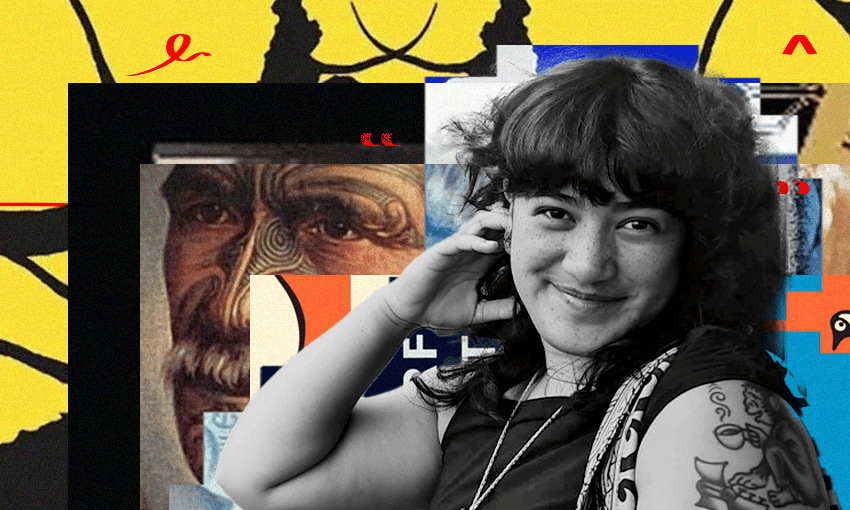Jessie Bray Sharpin discovers ‘a shining nugget of a book’ in Central Otago Couture: The Eden Hore Collection by Jane Malthus, Claire Regnault and Derek Henderson.
“In 2013 the Central Otago District Council made a highly unusual purchase for a local government body. They acquired a collection of over 270 high fashion garments and their associated archive.”
My dad’s side of the family are all south and central Otago dwellers, and when I told him about this book he reminded me that my aunt and uncle used to rent Eden Hore’s house at Glenshee. This brought up vague memories of having imagined them living among glass display cases of tasselled and sequinned garments scattered throughout a luxuriously carpeted 70s farmhouse; costumes on display between bedroom wardrobes, next to a hallway cupboard, looming large in the lounge. I realise now this strange daydream came from being told something once about a collection of costumes and a farmer from the Māniatoto.
This quintessential Kiwi connection feels fitting for a story about a stockman who ended up owning an unrivalled collection of couture. The small-townness of New Zealand; how everyone knows everyone, but also how people can completely surprise you.
A new book from Te Papa Press by Jane Malthus, Claire Regnault and Derek Henderson, Central Otago Couture: The Eden Hore Collection, tells the story of the Central Otago sheep and cattle farmer, and his collection of over 200 high fashion garments from the 1970s and 1980s, now owned by the Central Otago District Council.
The text of the book is divided between a biography of Hore and the makeup of the collection itself via chapters on fabrics and designers, the natural materials that inspired Hore with a direct link to his farming background, and the competitive fashion design scene that also influenced Hore’s collecting, like the Gown of the Year competitions. The shared expertise of Malthus and Regnault provides the reader with insights into Hore’s life, the background to his collecting, and crucially contextualises the collection within a snapshot of the Aotearoa fashion and textile industry at the time Hore was acquiring garments.
The bridge between the text and the physical collection are the photographs by Derek Henderson that make up over half the book: photoshoots that took place between 2019 and 2024 of the garments worn against the backdrop of the striking Central Otago landscape.
Henderson’s photographs elevate the viewer’s experience of the collection entirely, enabling a unique and rare example of a heritage textile collection being worn by live models. To say the collection is brought to life by the photographs is an understatement; the photographs are pieces of art in their own right.
The book describes Eden Hore as a man of contrasts and this theme is mirrored by the images. The startling colours of the garments stand out vividly against the huge expanse of the Māniatoto high country. Models Ngahuia Williams, Hannah Clarke and Alannah Kwant are photographed at places like Poolburn Reservoir, Danseys Pass, Clyde and Lake Dunstan. The garments are a shock to the landscape, and yet somehow they fit so beautifully it’s like seeing an animal in its natural habitat. The models stand Barbarella-like against the otherworldly backdrops of Blue Lake, St Bathans and Bannockburn.
The photographs shot at Hayes Engineering in Ōturēhua is a nod to another family of inventive characters making their mark on Central Otago lore and community: Ernest Hayes invented farm machinery and his wife Hannah cycled all over the district selling it. Their sons invented too: their house is home to inventions like a very early shower and the first flushing toilet in the Māniatoto. Hayes reminds me of photographs of Hore’s house at Glenshee: an expansive fenced lawn with ornamental fountains sitting strange amid the paddocks and rolling Māniatoto high country.
I think of the pieces being worn in this endless open air in comparison to their time on display in Eden Hore’s converted tractor shed at Glenshee – alongside his collection of Jim Beam decanters and taxidermied animals. These collections were part of Eden Hore’s desire to put Central Otago on the map and draw people to the region. Over the years he hosted garden parties on the lawn at Glenshee where models paraded in the garments; used the airstrip on his farm for fly-in-fly-out visits from the likes of Pat Fairfax of Coronation Street fame; and he collected animals for a petting zoo. Among these were 15 miniature horses which Hore went all the way to South Carolina to buy, creating a successful business and a dynasty of tiny equine sweethearts, one of whom, Pippi, features in the 2024 photoshoot.
Hore really was a man of contrasts. Born in Naseby in 1919, he spent his childhood on his family’s farm, Ida Vale, attending school with his siblings at Kyeburn, and eventually working as a musterer before driving ambulances in the Second World War. Returning to the Māniatoto after the war, he bought Glenshee farm and homestead and married Norma Gaskin in 1947. Glenshee was a sheep farm which Hore added to with beef cattle in the 1970s. He was a successful farmer before he turned to more sartorial entrepreneurial pursuits which led to the establishment of the Eden Hore Collection.
After Eden and Norma’s divorce in the early 1960s, Eden Hore took on a housekeeper and “land girl”, Alma McElwain. McElwain, who had trained as a model in Dunedin’s Joanne School of Charm, played a crucial role in Hore’s story, as many of the garments in his collection were bought for her. Hore also became involved with the Miss New Zealand pageants that were run by Joe Brown, another Māniatoto man. He became the driver for singer John Hore (no relation) who performed at the Miss New Zealand shows throughout the country and was managed by Brown. The pageant scene exposed Hore to more high fashion, encouraging his collecting. In 1975 Hore had a custom showroom made for his collection of “high and exotic fashion” at Glenshee, which became known as the Tractor Shed. Throughout the 1970s he provided a contrasting experience for visitors to Glenshee: high country farm and high fashion. Perhaps the most fitting descriptor is Hore’s own: in 1977 he advertised a show of his collection in Queenstown with the title “Cattleman Extraordinary and Fashion Fancier”.
For readers who know the Hore collection already, Central Otago Couture provides a deeper understanding of the collection’s place in Eden Hore’s life. For those coming in blind the book is a striking starting point. The book gives us a chance to see the garments themselves through an expert’s eye, with details like Beverley Horne’s 1971 hostess gown being made from wool she dyed gold with onion skins. I loved reading that Jo Dunlap, the designer behind Electra, a peacock blue polyester and silver Lurex jumpsuit and matching cloak, was a sci-fi fan.
This is a shining nugget of a book: bound in cloth the colour of Otago autumn and its rolling gold-tussocked landscape, the bright blue page-marking ribbon the wide open sky. I thrust it into the hands of friends like treasure; I feel like I’m letting them in on a secret.
Central Otago Couture: The Eden Hore Collection by Jane Malthus, Claire Regnault and Derek Henderson (photography) ($70, Te Papa Press) is available to purchase from Unity Books.






